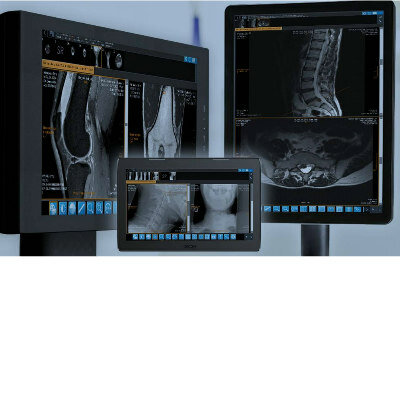Molecular Breast Imaging More Effective than Mammography at Detecting Cancer in High-Risk Women with Dense Breasts
By MedImaging International staff writers
Posted on 16 Sep 2008
In the largest-ever study to date that compares molecular breast imaging (MBI) to mammography, researchers have demonstrated that MBI can detect three times as many tumors in women who have dense breast patterns on their mammogram and are at increased risk of breast cancer. Posted on 16 Sep 2008
Mammography is the current standard of care for breast cancer screening. However, with mammography it is difficult to differentiate normal breast tissue from tumor tissue in women with dense breasts. As a result, women who have dense breasts as well as other breast cancer risk factors often need further screening.
The study's findings, presented in September 2008 at the American Society of Clinical Oncology's 2008 Breast Cancer Symposium, held in Washington DC, USA, demonstrated that MBI, a comparatively new screening modality, is more expensive than mammography, but costs approximately one-fifth that of breast magnetic resonance imaging (MRI). With MBI, patients are injected with a short-living radioactive agent that is absorbed by breast tissue. The agent is tracked with a specialized camera that can differentiate healthy tissue from breast cancer tumors, as cancer cells absorb more of the radioactive agent than healthy cells. MBI is currently available at a limited number of cancer centers, but its availability is growing.
"These results suggest that MBI could become an important screening tool for women who have dense breast tissue and increased breast cancer risk,” said Carrie B. Hruska, Ph.D., a research fellow in the department of radiology at Mayo Clinic (Rochester, MN, USA). "Larger trials are needed to further validate our research, but it is encouraging to find that MBI can detect cancers that are not easily visible on screening mammography. Our next step will be to compare MBI prospectively to other screening methods, such as MRI.”
Nine hundred and forty women were included in this study and were screened with both MBI and mammography. Participants had to meet two criteria. First, their breasts were determined to be dense by a previous mammogram. Second, they had an increased risk of breast cancer due to personal or family history, a genetic mutation related to breast cancer, a previous precancerous condition, or a history of radiation therapy to the chest.
Thirteen tumors in 12 patients were detected: 8 by MBI alone, 1 by mammography alone, 2 by both techniques, and 2 by neither. The recall rates (the number of women who needed follow-up testing) were 7.7% for MBI versus 9.4% for mammography. Of the 36 biopsies prompted by MBI, 27.8% were positive for cancer; of the 17 biopsies prompted by mammography, 17.6% were positive for cancer.
The researchers are continuing to follow all of the patients in the study, and so far, 375 have been followed for 15 months or longer after the initial screening. Based on follow-up screening in these women, researchers determined the sensitivity and specificity of the two techniques. The sensitivity and specificity for MBI were 75% and 93.2%, respectively. By comparison, the sensitivity and specificity for mammography were 25% and 91.3%, respectively.
Related Links:
Mayo Clinic














